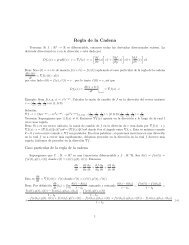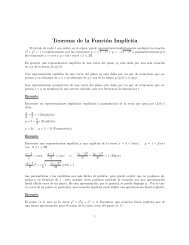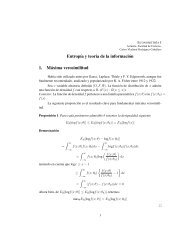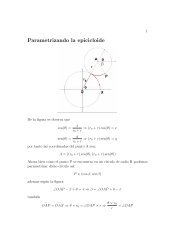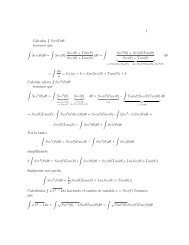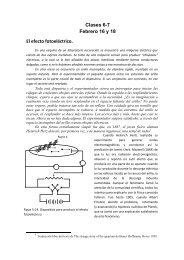"Surely You're Joking, Mr. Feynman!" - unam.
"Surely You're Joking, Mr. Feynman!" - unam.
"Surely You're Joking, Mr. Feynman!" - unam.
Create successful ePaper yourself
Turn your PDF publications into a flip-book with our unique Google optimized e-Paper software.
though it was a microscope of forty or fifty power. With care you could hold the focus.<br />
So I could go around and look at things right out in the street.<br />
So when I was in graduate school at Princeton, I once took it out of my pocket to<br />
look at some ants that were crawling around on some ivy. I had to exclaim out loud, I was<br />
so excited. What I saw was an ant and an aphid, which ants take care of they carry<br />
them from plant to plant if the plant they're on is dying. In return the ants get partially<br />
digested aphid juice, called "honeydew." I knew that; my father had told me about it, but<br />
I had never seen it.<br />
So here was this aphid and sure enough, an ant came along, and patted it with its<br />
feet all around the aphid, pat, pat, pat, pat, pat. This was terribly exciting! Then the<br />
juice came out of the back of the aphid. And because it was magnified, it looked like a<br />
big, beautiful, glistening ball, like a balloon, because of the surface tension. Because the<br />
microscope wasn't very good, the drop was colored a little bit from chromatic aberration<br />
in the lens it was a gorgeous thing!<br />
The ant took this ball in its two front feet, lifted it off the aphid, and held it. The<br />
world is so different at that scale that you can pick up water and hold it! The ants<br />
probably have a fatty or greasy material on their legs that doesn't break the surface<br />
tension of the water when they hold it up. Then the ant broke the surface of the drop with<br />
its mouth, and the surface tension collapsed the drop right into his gut. It was very<br />
interesting to see this whole thing happen!<br />
In my room at Princeton I had a bay window with a Ushaped windowsill. One<br />
day some ants came out on the windowsill and wandered around a little bit. I got curious<br />
as to how they found things. I wondered, how do they know where to go? Can they tell<br />
each other where food is, like bees can? Do they have any sense of geometry?<br />
This is all amateurish; everybody knows the answer, but I didn't know the answer,<br />
so the first thing I did was to stretch some string across the U of the bay window and<br />
hang a piece of folded cardboard with sugar on it from the string. The idea of this was to<br />
isolate the sugar from the ants, so they wouldn't find it accidentally. I wanted to have<br />
everything under control.<br />
Next I made a lot of little strips of paper and put a fold in them, so I could pick up<br />
ants and ferry them from one place to another. I put the folded strips of paper in two<br />
places: Some were by the sugar (hanging from the string), and the others were near the<br />
ants in a particular location. I sat there all afternoon, reading and watching, until an ant<br />
happened to walk onto one of my little paper ferries. Then I took him over to the sugar.<br />
After a few ants had been ferried over to the sugar, one of them accidentally walked onto<br />
one of the ferries nearby, and I carried him back.<br />
I wanted to see how long it would take the other ants to get the message to go to<br />
the "ferry terminal." It started slowly, but rapidly increased until I was going mad<br />
ferrying the ants back and forth.<br />
But suddenly, when everything was going strong, I began to deliver the ants from<br />
the sugar to a different spot. The question now was, does the ant learn to go back to<br />
where it just came from, or does it go where it went the time before?<br />
After a while there were practically no ants going to the first place (which would<br />
take them to the sugar), whereas there were many ants at the second place, milling<br />
around, trying to find the sugar. So I figured out so far that they went where they just<br />
came from.




